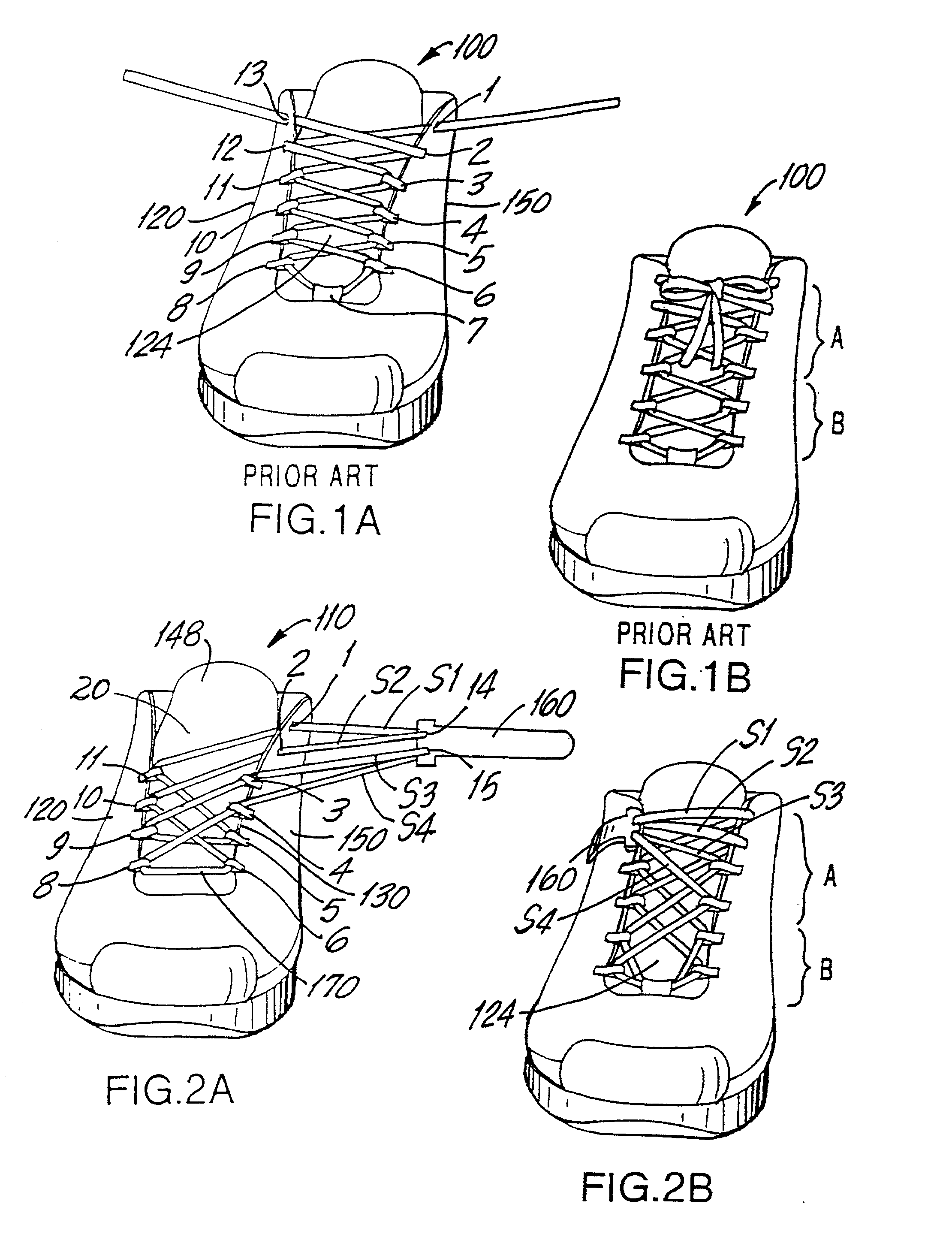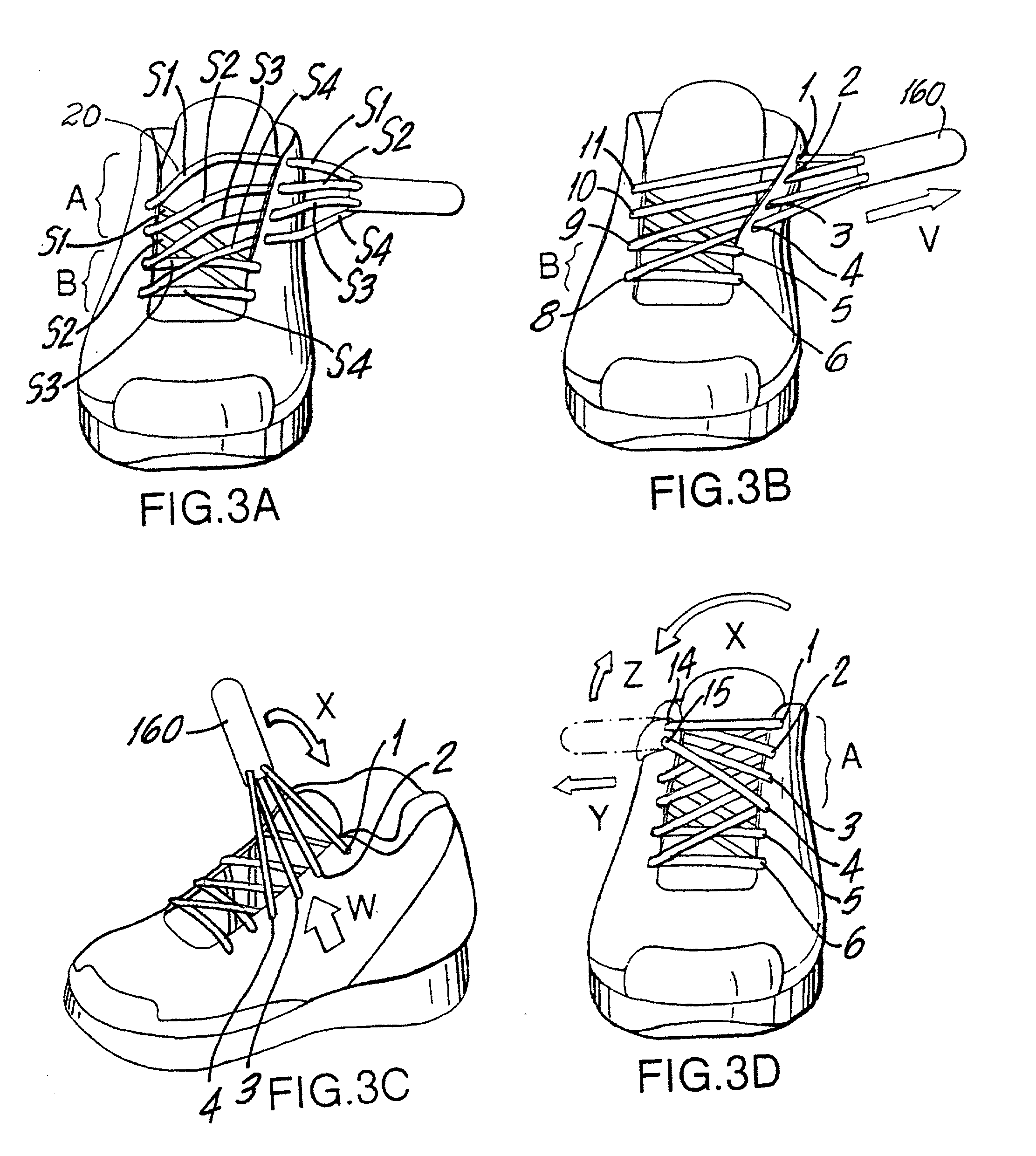Lacing system
a lacing system and lace technology, applied in the direction of fastenings, shoelace fastenings, footwear, etc., can solve the problems of current lacing systems, inconvenient maintenance, and inability to maintain tension
- Summary
- Abstract
- Description
- Claims
- Application Information
AI Technical Summary
Benefits of technology
Problems solved by technology
Method used
Image
Examples
Embodiment Construction
[0059] FIGS. 1A-B illustrate a conventionally laced sneaker 100, untied and tied respectively.
[0060] The same number of eyelets are on either side 120, 130 of the adjustable opening 124. There are four pairs of eyelets over the instep 3,11; 4,10; 5,9; 6,8. There are two pairs of eyelets at the ankle 1,13; 2,12, which are placed there for additional support.
[0061] For the sake of brevity in the drawing illustrations, only the right sneaker 110 of the present invention is shown and discussed throughout this disclosure, however, one skilled in the art will readily recognize that the lacing system can be easily incorporated into a left sneaker (and other articles of footwear such as sandals, boots, and slippers, etc.). The eyelets could be holes, loops, hooks, etc. and there could be more or less than the examples given. The sneakers in FIGS. 2A-B have four (4) pairs of eyelets 3,11; 4,10; 5,9; 6,8 on the sides of the adjustable opening 124. Two additional eyelet holes 1, 2 are on the t...
PUM
 Login to View More
Login to View More Abstract
Description
Claims
Application Information
 Login to View More
Login to View More - R&D
- Intellectual Property
- Life Sciences
- Materials
- Tech Scout
- Unparalleled Data Quality
- Higher Quality Content
- 60% Fewer Hallucinations
Browse by: Latest US Patents, China's latest patents, Technical Efficacy Thesaurus, Application Domain, Technology Topic, Popular Technical Reports.
© 2025 PatSnap. All rights reserved.Legal|Privacy policy|Modern Slavery Act Transparency Statement|Sitemap|About US| Contact US: help@patsnap.com



